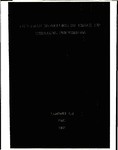Full-field modelling of crack tip shielding phenomena
| dc.contributor.author | Lu, Yanwei | |
| dc.contributor.other | Faculty of Science and Engineering | en_US |
| dc.date.accessioned | 2011-10-26T08:04:00Z | |
| dc.date.available | 2011-10-26T08:04:00Z | |
| dc.date.issued | 2011 | |
| dc.date.issued | 2011 | |
| dc.identifier | 10151325 | en_US |
| dc.identifier.uri | http://hdl.handle.net/10026.1/885 | |
| dc.description.abstract |
The application of fracture mechanics to engineering design has provided significant advances in understanding of the causes and mechanisms of failure and crack growth. Despite this, there are still some aspects that remain incompletely understood, such as the crack closure/crack shielding effect. The presence of crack closure/shielding acts to reduce . The mechanisms of crack closure/shielding are complicated, and have not been fully understood. This work focuses on the plasticity-induced crack tip shielding mechanism and presents a novel approach to characterise the elastic stress fields under the influence of the plastic enclave surrounding the crack tip. The model is successfully applied to determine the four stress parameters experimentally using full-field photoelastic stress analysis on polycarbonate CT specimens, following studies of the effect of the crack tip position and the valid data collection zone giving the best fit between the model predictions and the experimental data. The predicted values from the model demonstrate good data repeatability, and exhibit sensible trends as a function of crack length and load ratio that are interpretable in terms of physically meaningful changes to the plastic enclave. In addition, the model is proven to describe the stress field around a crack more accurately than classic Williams‟ stress solution. The model is also extended to AL 2024-T3 specimens using a full-field displacement measurement technique, digital image correlation. Using the Sobel edge detection method to identify the crack tip from the displacement fields with a rectangular shaped data collection zone employed in the current study, reasonable trends were again demonstrated in the experimental results as a function of crack length. | en_US |
| dc.language.iso | en | en_US |
| dc.publisher | University of Plymouth | en_US |
| dc.subject | Crack Closure | |
| dc.subject | Crack Shielding | |
| dc.subject | Digital Image Correlation | |
| dc.subject | Photoelasticity | |
| dc.subject | Fatigue Crack | en_US |
| dc.title | Full-field modelling of crack tip shielding phenomena | en_US |
| dc.type | Thesis | |
| dc.identifier.doi | http://dx.doi.org/10.24382/4997 |
Files in this item
This item appears in the following Collection(s)
-
01 Research Theses Main Collection
Research Theses Main


